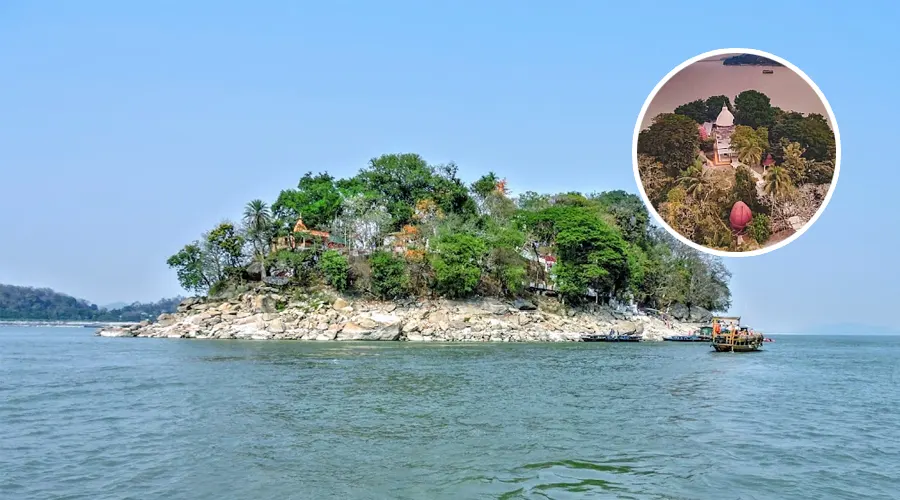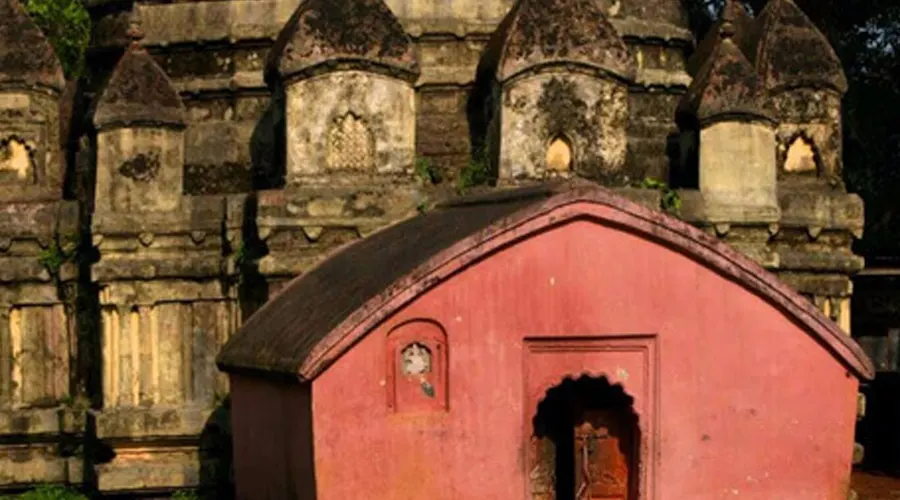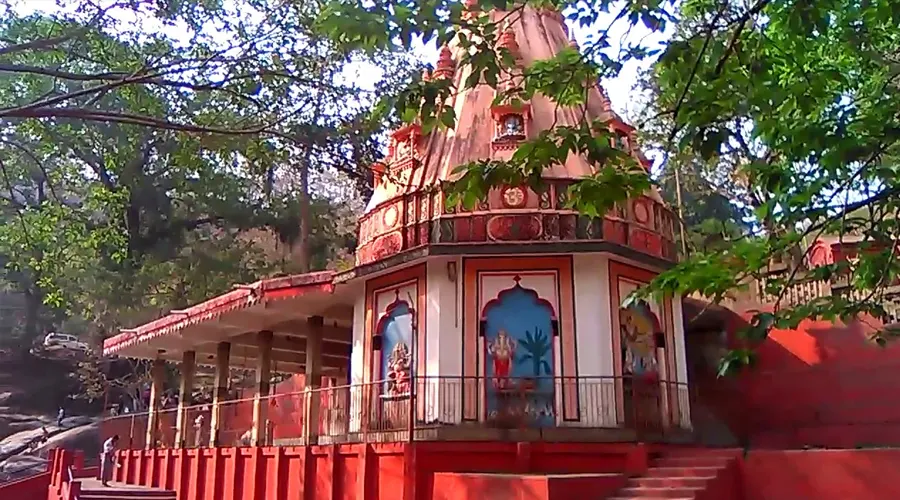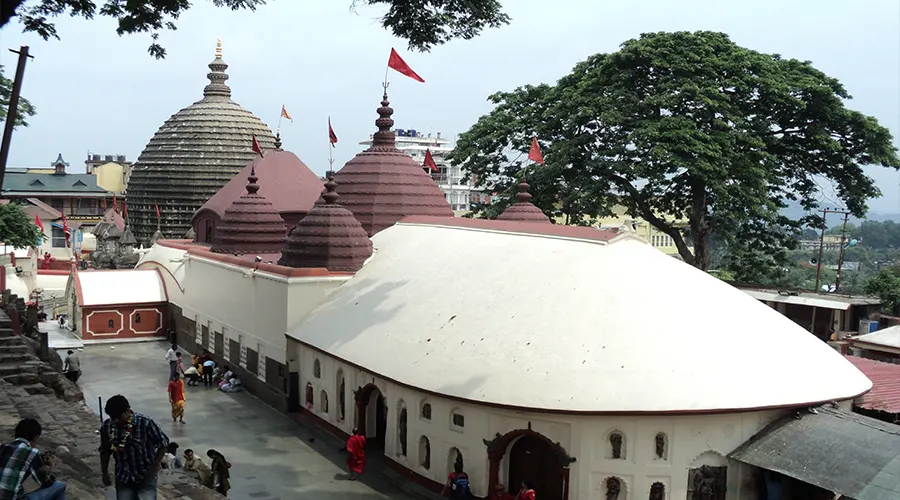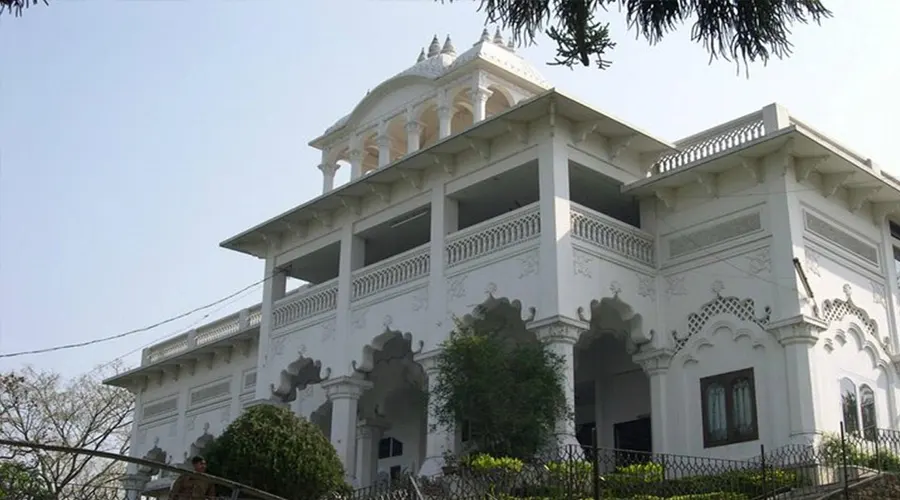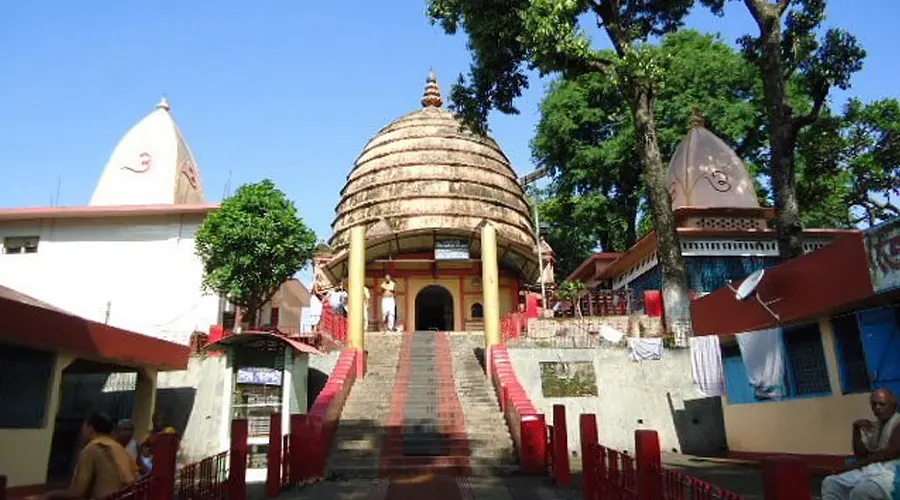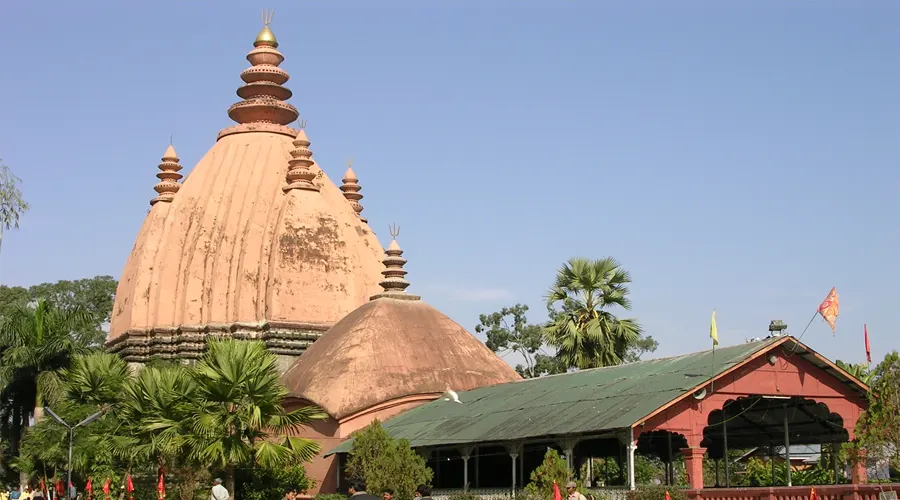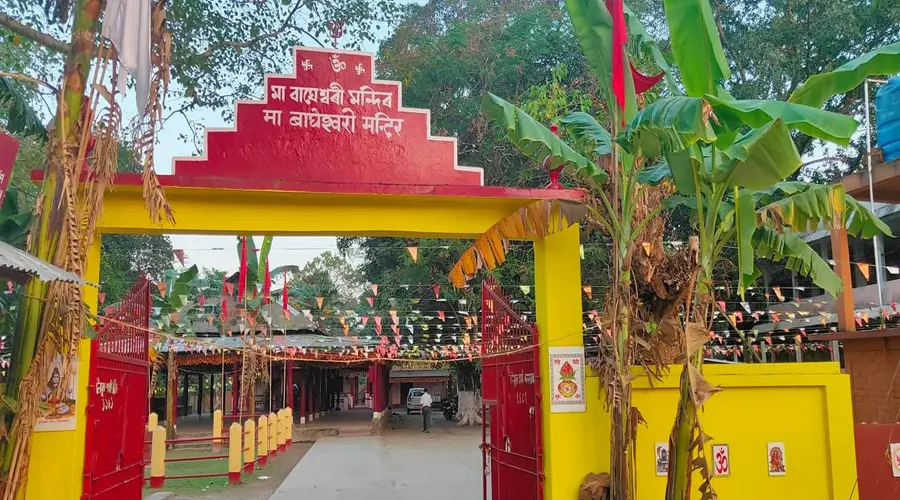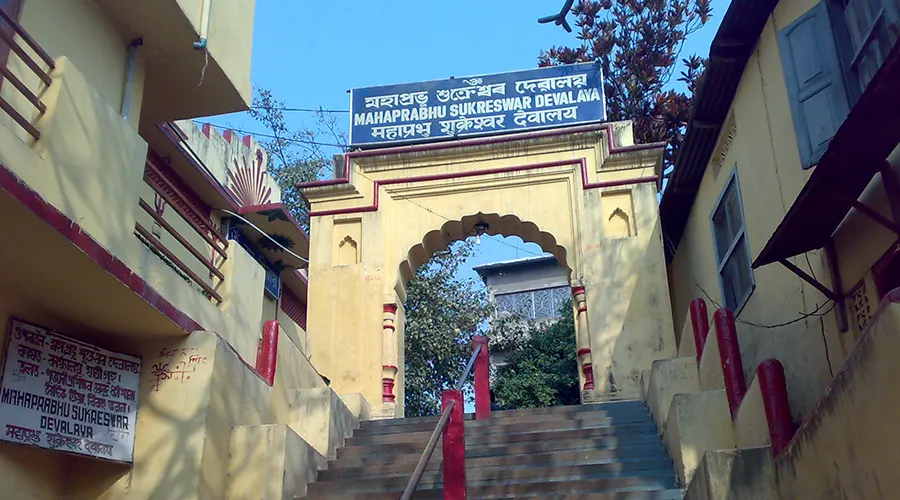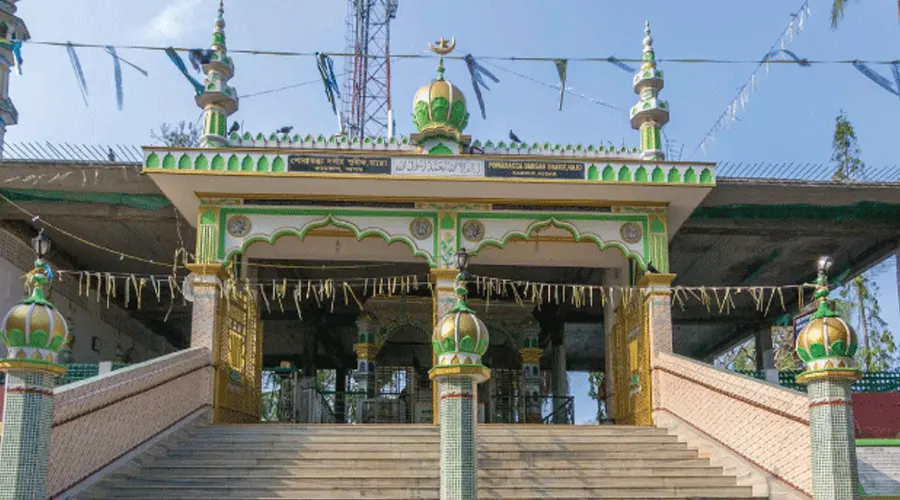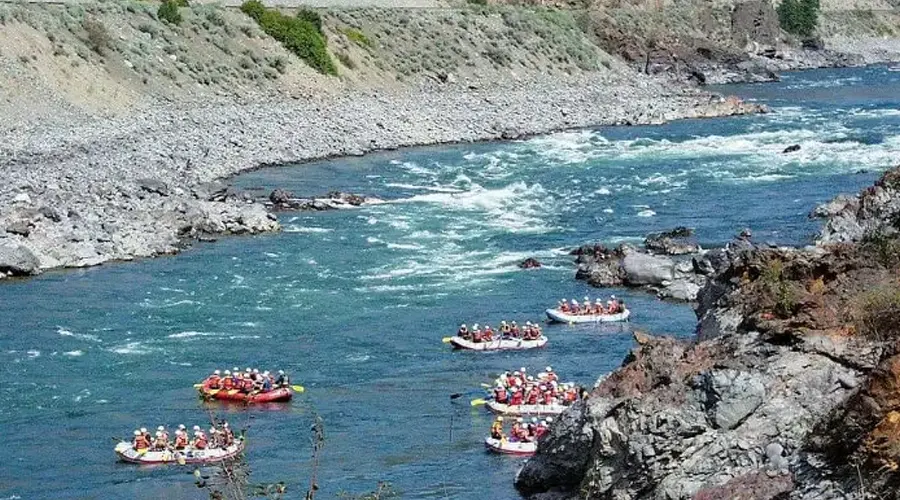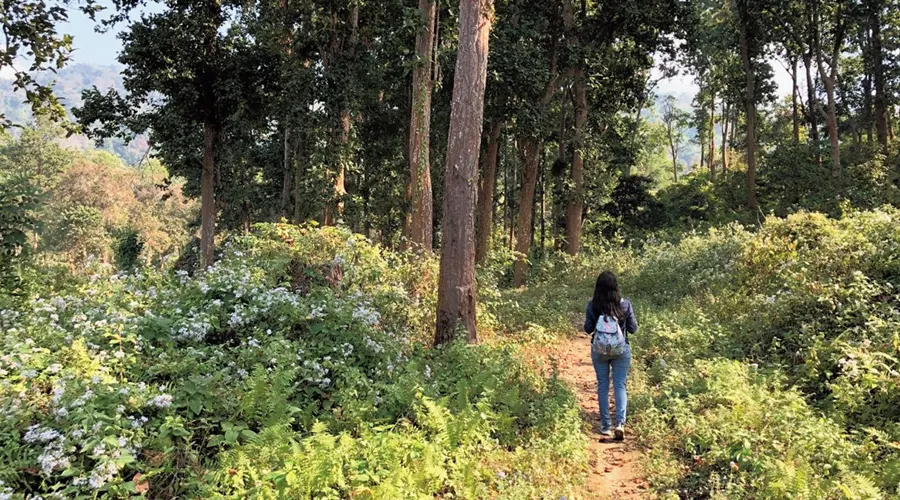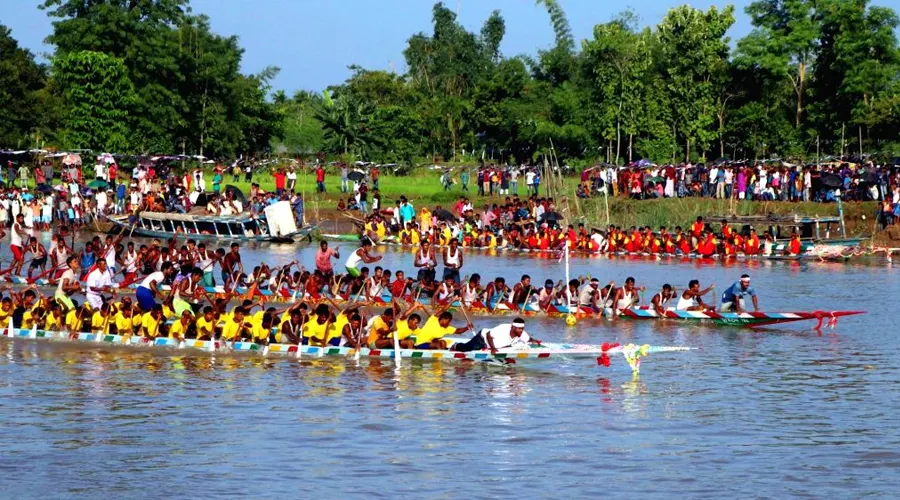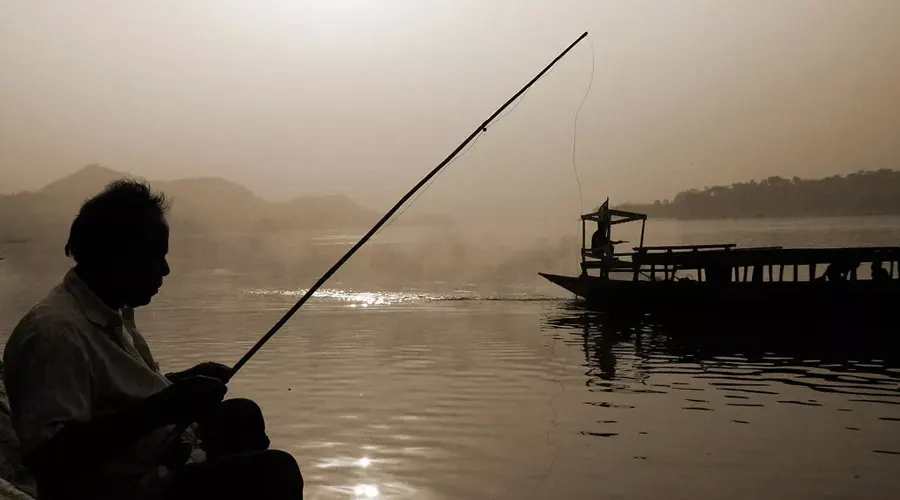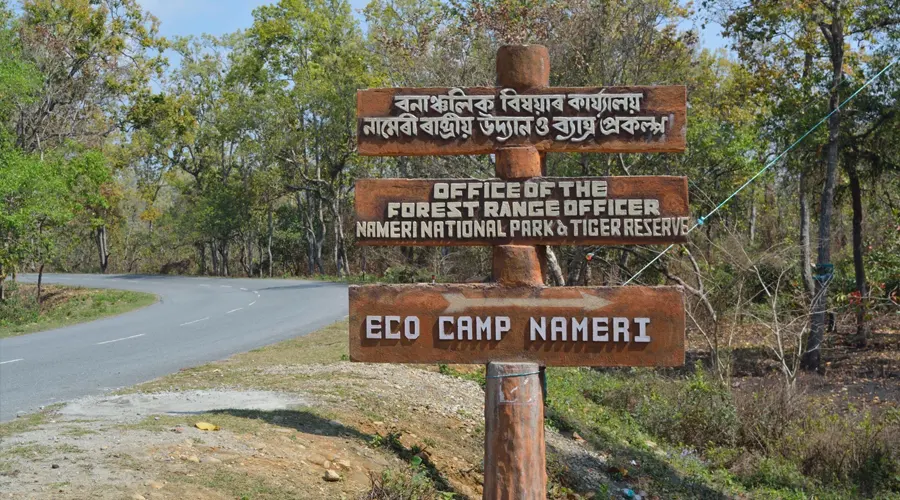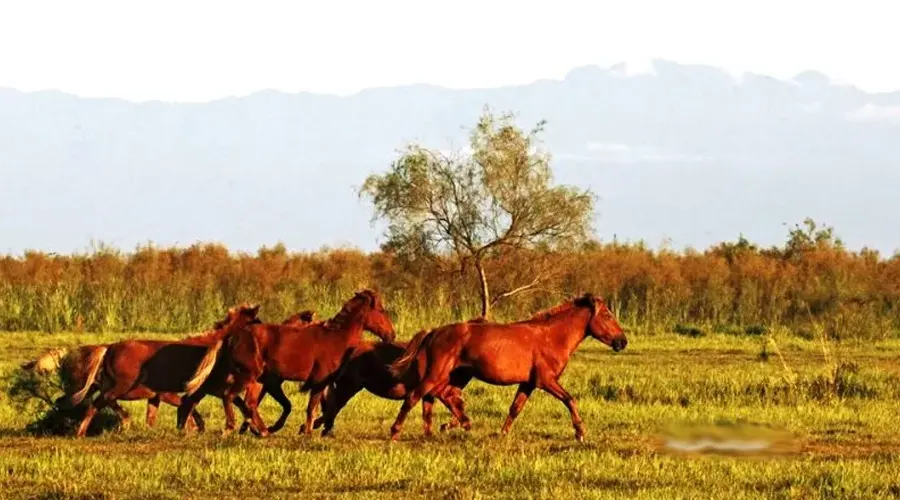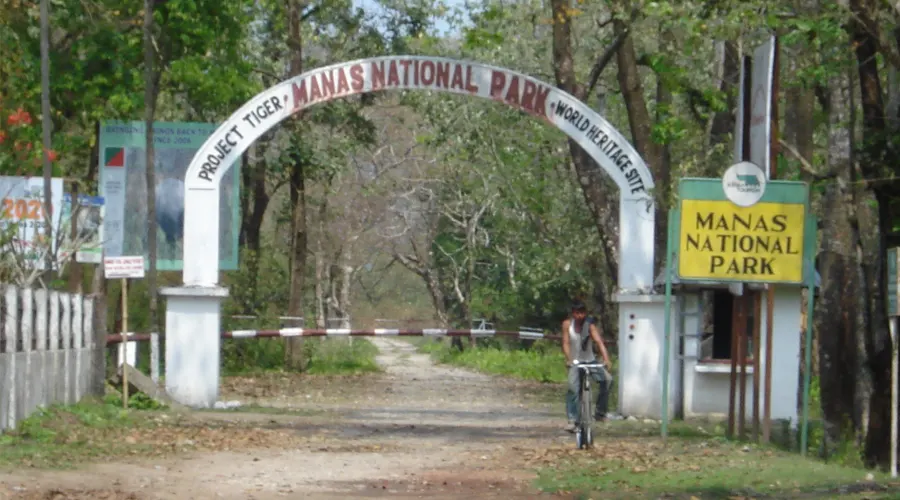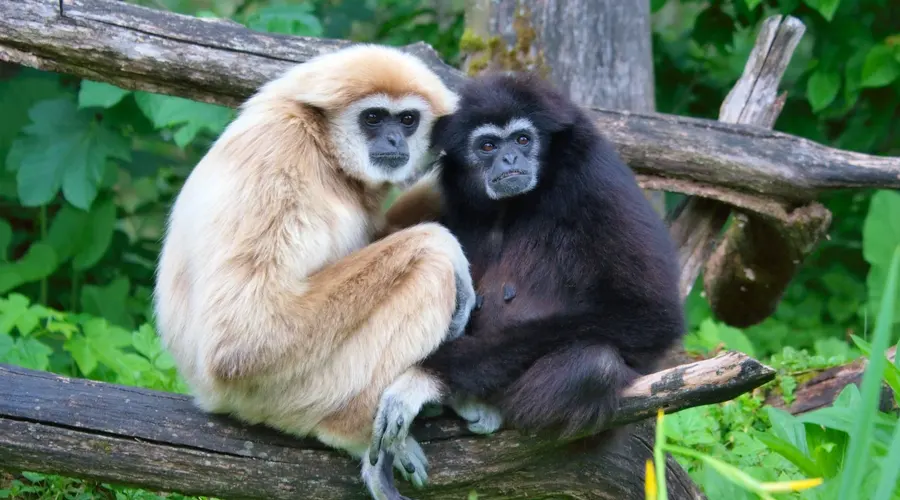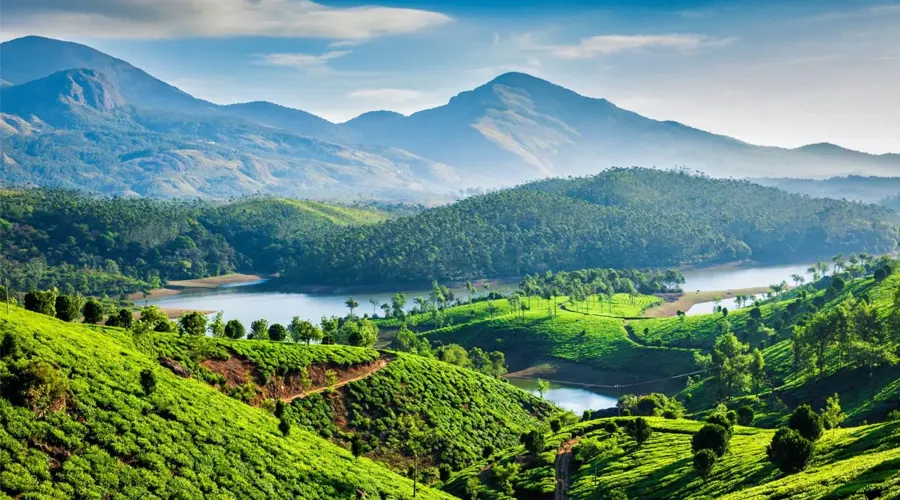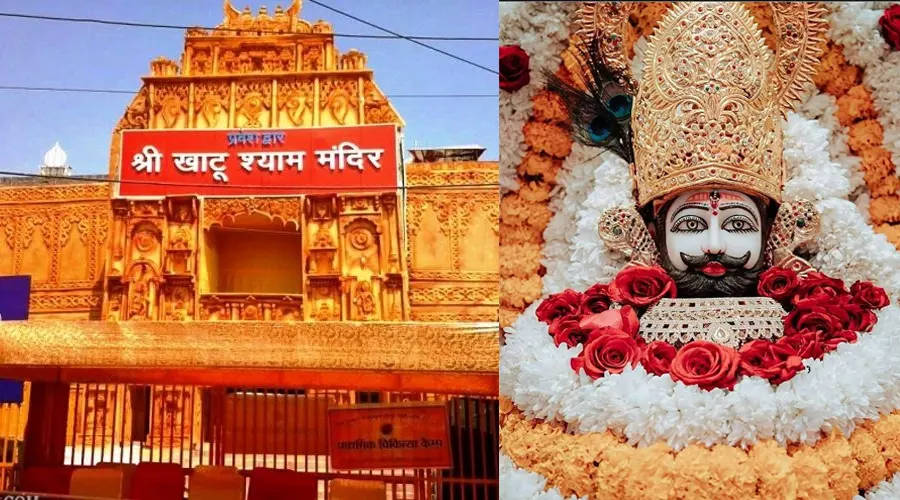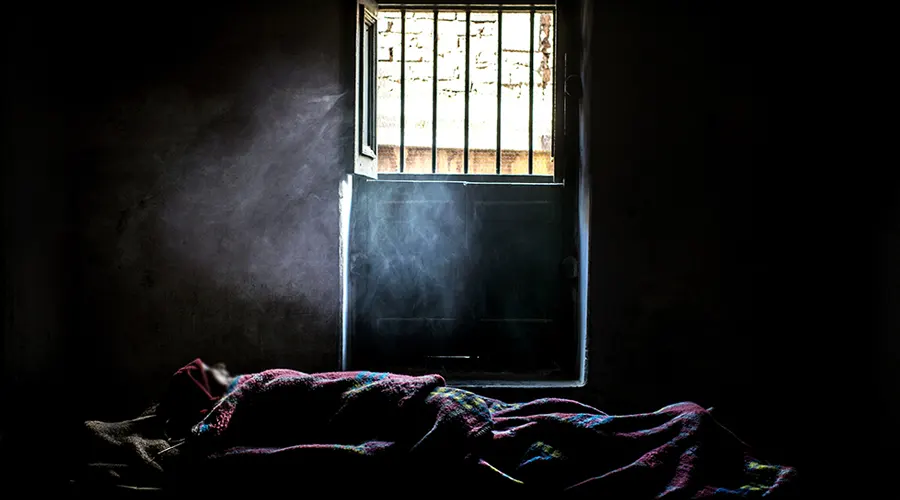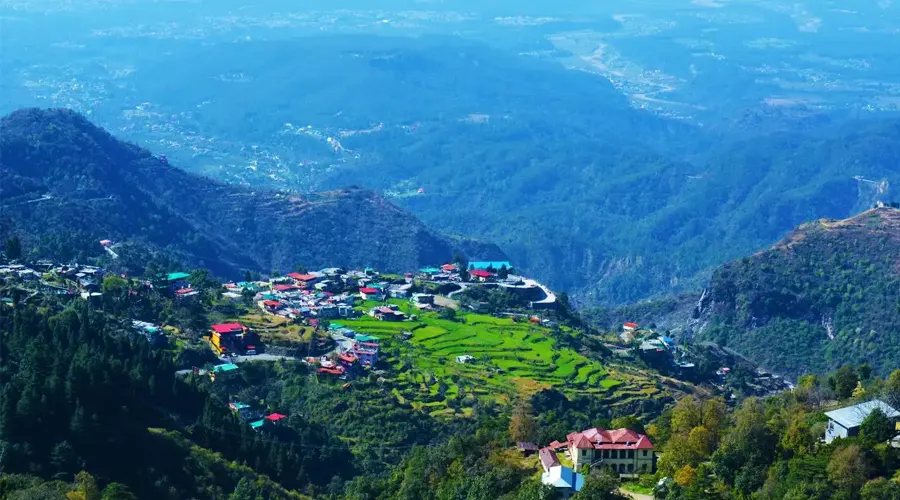Umananda Temple
In the River Brahmaputra, Peacock Island is just in the middle; here stands the revered Umananda Temple, where the presiding deity is Lord Shiva. The island is the world’s smallest riverine island, which is inhabited by people. The Shiva temple was built on the island by the well-known Shaivaite king of the Ahoms, Gadadhar Singha. The temple is situated on top of a mountain called Bhasmachala. According to the local myth, Lord Shiva used to reside in this place as Bhayananda. Kalika Puran, a mythical Hindu text suggests that at the beginning of creation, Shiva was busy in meditation, when Kamadeva, the God of love and desire, came and interrupted his ritual. Shiva became angry, and with a glance burned him into ashes. He then sprinkled the ashes at this spot. Since Kamadeva was burned down at this place, the hill is called bhasmachala or bhasmakuta. The temple has a presiding deity called Umananda, another appearance of Shiva. On the day of Shiva Chaturdashi, a fair is held in the area, which is an attraction for devotees. The temple was known to be created by Bar Phukan Gharhganya Handique in 1694 A.D under the direction of the Ahom king, Gadadhar Singha. The temple houses several rock-cut structures showing the exquisite craftsmanship of the sculptures of the region. The temple, therefore, has archaeological significance other than the religious one.
History
The Umananda temple was earlier known as Umananda devaloi which means "The abode of Lord Shiva". As can be gathered from the name, it is dedicated to Lord Shiva. The magnificent temple was built in 1694 by the Bar Phukan Gadadhar Singha. However, the order was issued by King Gadadhar Singha who was one of the mightiest kings of the Ahom kingdom.
According to a legend, Lord Shiva resided on this island as Bhayananda. It is said that at the beginning of creation, Lord Shiva sprinkled ashes here and imparted the supreme knowledge to his wife, Parvati. The temple's actual history is overshadowed by many such legends. It is said that the Goddess Urvasi resides on this island and brinks "Amrit" or nectar for Goddess Kamakhya. That is why the island is also called Urvasi Island. Even the Bhasmakuta hill on which the temple is located has a story. Legend says that when Kamadeva disturbed Lord Shiva during his meditation, he turned Kamadeva into ashes on this hillock, hence earning it the name of Bhasmakuta.
During the Mughal rule in Kamrupa, the Umananda temple received grants and donations from the Mughal emperors Jahangir and Aurangzeb. Sadly, the mighty temple was heavily damaged in an earthquake in 1897. It was later rebuilt by a rich merchant who was a devotee of Lord Shiva.
Architecture
Although the temple is devoted to Lord Shiva, it has shrines of ten other Hindu Gods and Goddesses. Idols of Surya, Ganesha, Shiva, and the Devi, and the ten incarnations of Vishnu are found in the Umananda temple. The beautifully designed temple can be reached by a winding flight of stairs. The temple in itself is an epitome of the mastery of the Assamese craftsmen and architects. The sanctum sanctorum encloses the rock on which Lord Shiva sat to meditate.

